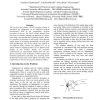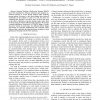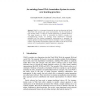9 search results - page 1 / 2 » Learning features on robotic surgical tools |
CVPR
2012
IEEE
11 years 7 months ago
2012
IEEE
Computer-aided surgical interventions in both manual and robotic procedures have been shown to improve patient outcomes and enhance the skills of the human physician. Tool trackin...
ICRA
2009
IEEE
13 years 11 months ago
2009
IEEE
— We describe a general methodology for tracking 3-dimensional objects in monocular and stereo video that makes use of GPU-accelerated filtering and rendering in combination wit...
ICRA
1998
IEEE
13 years 8 months ago
1998
IEEE
The two-level fuzzy-lattice (2L-FL) learning scheme is introduced for application on an intelligent surgical (mechatronic) drill in the stapedotomy surgical procedure in the ear. ...
ICRA
2007
IEEE
13 years 11 months ago
2007
IEEE
— Human Machine Collaborative Systems (HMCS) have been developed to enhance sensation and suppress extraneous motions or forces during surgical tasks requiring precise motion. Ho...
ECTEL
2007
Springer
13 years 10 months ago
2007
Springer
Web2.0 is a conceptual framework that aims at enhancing the World Wide Web with semantic and social functionnalities. For this framework to fully develop, there is a need for concr...



